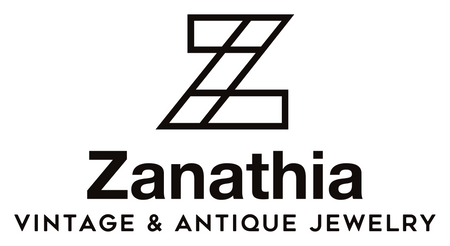
The Victorian jewelry era (1837-1901) was named after Queen Victoria, whose reign lasted from 1837-1901. Queen Victoria was the second longest ruling monarch, and there were three periods within the Victorian Jewelry era that she greatly inspired.

(Painting of Queen Victoria. Queen Victoria ruled from 1837 to 1901, Getty Images)
The Romantic Era (1837-60) celebrated the monarch's love with the love of her life, Prince Albert. This era of Victorian jewelry was full of sentimental and symbolic jewelry, such as the engagement ring Prince Albert gave his new bride. The serpent engagement ring symbolized eternity, and this gesture's simple yet romantic allure greatly influenced the first period of the Victorian era. Standard designs on Romantic-era Victorian jewelry included flowers, hearts, and birds. One could express their devotion with jewelry, with cameos depicting cupid or enameled pieces.
The second period of Victorian Jewelry was the Grand Era (1861-81). When Queen Victoria's beloved Prince Albert died in 1861, she was heartbroken and began to wear mainly all-black clothing that correlated with her going into mourning. The Grand Era of Victorian jewelry is often most associated with 'mourning jewelry,' and the focus was to honor the memory of the departed with sentimental designs. The mourning jewelry colors of choice during the Grand Era were primarily black, white, and gold. Some natural materials used were onyx, red garnet, seed pearls, and jet. One of the most popular mourning jewelry mementos were accessories that contained lockets or intricately woven strands of a deceased loved one's hair. Revival jewelry styles, such as Egyptian, Roman, and Etruscan, were shared. Common accessory examples of the Grand Era include Black choker necklaces, intricately designed gold and black enamel brooches/pins, and images of women carved in cameos created from lava or black stone. It was also common to have a personalized sentimental message or monogrammed signature on jewelry dedicated to the memory of loved ones.

(Photo of Queen Victoria During the 'Grand Period' of the Victorian Era after Prince Albert Passed. She wore mourning attire and accessories during a long grieving period, which inspired an international trend.)

(Queen Victoria's Mourning Brooch containing lockets of Prince Albert's hair. Hair jewelry was popular mementos choices for mourning jewelry)

(Examples of Victorian jewelry from the Grand Era of Queen Victoria's reign, known as the mourning era. Zanathia Collection)
The third and last period of the Victorian jewelry era was the Aesthetic Period (1881-1901). During this period, Queen Victoria was more optimistic and looked forward to a brighter future after the grieving period of Prince Albert. The new era focused less on manufacturing and more on hand-made quality items. The last period of the Victorian Jewelry era emphasized aesthetically appealing jewelry that differed from the heavier adornments and mourning mementos that were previously common. Jewelry became smaller, and wearing your favorite accessories was more popular in the evening time of day. Diamonds became more prominent in designs, and gemstones were a favorite due to their natural beauty rather than their monetary worth. Common gems in the Aesthetic period include amethysts, opals, and garnet. The Art Nouveau jewelry era would also later emphasize the natural beauty of semiprecious stones. Other popular trends in the Aesthetic Period include the dog collar necklace, or collier de Chien, which was popularized by Queen Victoria's daughter-in-law Alexandra when she wore a multi-strand pearl adornment to cover a scar on her neck. The solitaire ring became prominent after Tiffany's advertised the six-prong gemstone setting in 1886.
/https://public-media.si-cdn.com/filer/99/66/99669148-c037-4ed5-9981-76aa80d84615/screen_shot_2019-05-29_at_33858_pm.png)
(Rare Footage of A Smiling Queen Victoria in the last years of her reign, 1900. Museum of Modern Art Archives)

(Antique Art Nouveau Era honorary medallion with pedant of woman. This is an example of the new transitional focus on the natural world, women, and emphasizing the aesthetic of materials used during the end of Queen Victoria's reign. Zanathia Jewelry Collection)
The Victorian jewelry era consisted of three extended periods that were inspired by the life happenings of Queen Victoria and emphasized sentimental values of adornments. The Victorian jewelry era has been a steady inspiration to many 'revival' enthusiasts for the 20th and 21st centuries. The famous dog collar necklace (collier de Chien) is still a statement piece loved by many.

